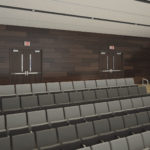Over the weekend, a tragic crowd crush occurred at a Halloween event in Seoul, South Korea. According to early news reports, at least 150 people have died and more than 100 were injured, many of them young women in their 20’s. Although this incident occurred on a narrow street, a crowd crush can also happen inside of a building. As with all life safety issues, we must continue to be vigilant.
The Washington Post has published an informative article on crowd crush: Here’s what causes crowd crushes like the deadly one in Seoul. In this article, Mehdi Moussaïd, a researcher in crowd behavior at the Max Planck Institute for Human Development in Berlin, estimates that there were up to 8-10 people per square meter in the Seoul tragedy.
“Martyn Amos, a professor at Northumbria University in England who studies crowds, said those large events need proper planning and people who are trained to manage crowds. ‘The general point is that these incidents will keep happening so long as we don’t put in place proper crowd-management processes that anticipate, detect and prevent dangerously high crowd densities,’ Amos said in a statement to The Washington Post.”
For several years, the National Fire Protection Association (NFPA) has been studying crowd management, focusing on ways that crowd managers and code officials could use a real-time crowd monitoring system to evaluate crowd dynamics. It’s possible that potentially dangerous situations could be neutralized, if detailed, data-informed situational awareness could identify rapid changes in crowd density, movement, and other behaviors. From NFPA:
“Those are the aims of an ongoing Fire Protection Research Foundation (FPRF) project on data-informed crowd management. Launched last year in collaboration with the NFPA Data and Analytics Group, the goal of the project is to develop a low-cost, open-source, proof-of-concept tool that can be used by safety officials to improve their real-time situational awareness of crowds. Funded by the National Institute of Standards and Technology (NIST), the crowd density tool will be capable of collecting, analyzing, visualizing, and reporting crowd data extracted from still images and video feeds. It is not intended to replace safety officials; instead, the tool can be used as part of the event planning process, and during live events to support crowd managers as they make timely, informed decisions.”
For more information on this research, read the Crowd Source article in NFPA Journal, or watch NFPA’s video below: The Future of Crowd Monitoring.
You need to login or register to bookmark/favorite this content.










My question on the Houston concert incident and similar,,,
I thought years ago, “””festival seating””” was kind of outlawed??? But seems to have creeped back?
As far as Korea,,, not sure there is an answer to a crowd like that???
This is a 2002 article
https://www.citybeat.com/news/festival-seating-return-is-past-due-12217371